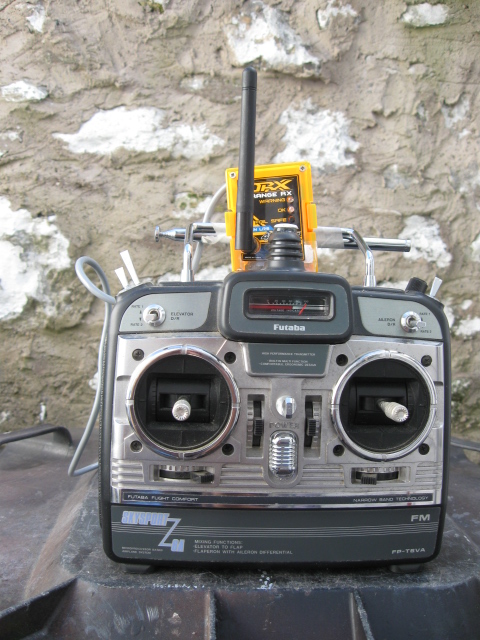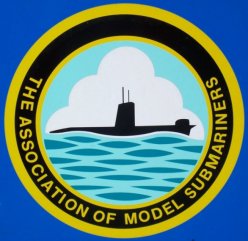Well this turned out to be a remarkably straight forward job by simply plugging an Orange module (Thanks for the module Dave J) into the Trainer socket of an old transmitter. (In this case one of the late Brian A's old aircraft transmitters a 35Mhz Skysport 7 transmitter.)
I removed the aerial and crystal to knock out the Radio Frequency section. (I think that is the right thing to do - perhaps someone could confirm this?)

I identified the Trainer socket pin-outs from one of the many online guides e.g:
http://www.endurance-rc.com/pinouts.php
http://users.belgacom.net/TX2TX/tx2tx/english/tx2txgb7.htm
You need to identify TX battery positive, ground and ppm out.
In the TX I used this was:
Pin 1 , +ve
Pin 2, ppm out
Pin 6 & cable screen, ground
(It is a good idea to check these with a voltmeter, if you have one. If I recall correctly the ppm signal will appear as an intermediate voltage.)
Connect these up to the input pins on the Orange module. (I wired up a socket to help with this. You can identify the correct pins by reading the printing on the circuit board.)
On the TX module I used the pins are from left to right:
RF - aerial connection , so not used
GND - ground
VIN - +ve transmitter voltage in
GND - ground
PPM -ppm in
Plug in, power on and bind the module to the Orange RX by pressing the "Fail safe" button on the back of the module as you power up the TX.
You will then find the TX functions as before but with a new, whizzy state- of- the-art radio frequency section. The Skysport is a non-computer set with lots of twiddly controls in the battery compartment to do servo reverse and perhaps some mixes. I didn't touch these!
Remarkably simple to put new life into old transmitters!
My aerial/module fixing arrangements could be improved of course. If there is space it may be possible to put the bare module in the TX case. It might also be possible to modify TX's without Trainer sockets but you may be getting a bit skinflint to have to do that! (They will be very old sets.)
David
I removed the aerial and crystal to knock out the Radio Frequency section. (I think that is the right thing to do - perhaps someone could confirm this?)

I identified the Trainer socket pin-outs from one of the many online guides e.g:
http://www.endurance-rc.com/pinouts.php
http://users.belgacom.net/TX2TX/tx2tx/english/tx2txgb7.htm
You need to identify TX battery positive, ground and ppm out.
In the TX I used this was:
Pin 1 , +ve
Pin 2, ppm out
Pin 6 & cable screen, ground
(It is a good idea to check these with a voltmeter, if you have one. If I recall correctly the ppm signal will appear as an intermediate voltage.)
Connect these up to the input pins on the Orange module. (I wired up a socket to help with this. You can identify the correct pins by reading the printing on the circuit board.)
On the TX module I used the pins are from left to right:
RF - aerial connection , so not used
GND - ground
VIN - +ve transmitter voltage in
GND - ground
PPM -ppm in
Plug in, power on and bind the module to the Orange RX by pressing the "Fail safe" button on the back of the module as you power up the TX.
You will then find the TX functions as before but with a new, whizzy state- of- the-art radio frequency section. The Skysport is a non-computer set with lots of twiddly controls in the battery compartment to do servo reverse and perhaps some mixes. I didn't touch these!
Remarkably simple to put new life into old transmitters!
My aerial/module fixing arrangements could be improved of course. If there is space it may be possible to put the bare module in the TX case. It might also be possible to modify TX's without Trainer sockets but you may be getting a bit skinflint to have to do that! (They will be very old sets.)
David




» David Forrest's R class
» Futaba -868/915mhz equipment
» Darnell type 21 submarine, need some help
» Robbe Seawolf V2
» bladder bags
» WW2 mini sub build
» Peral Submarine of 1888
» U-Boat R/C?